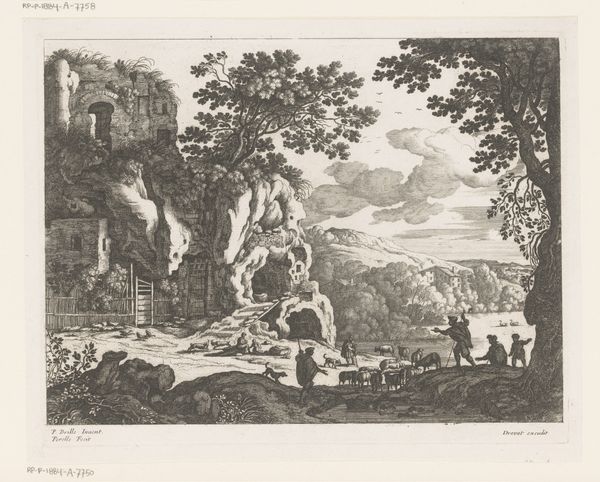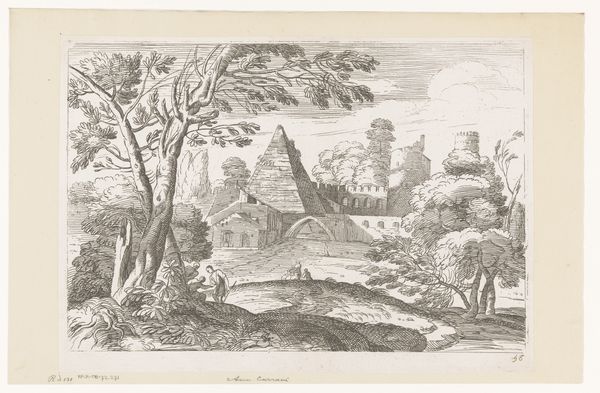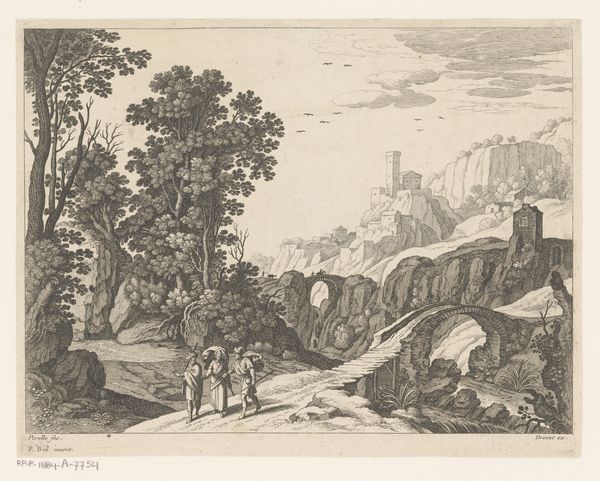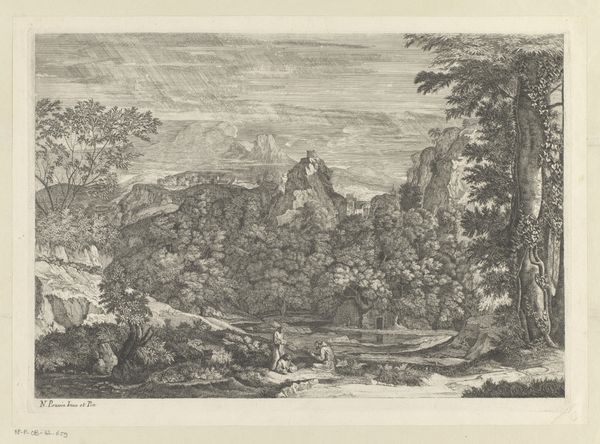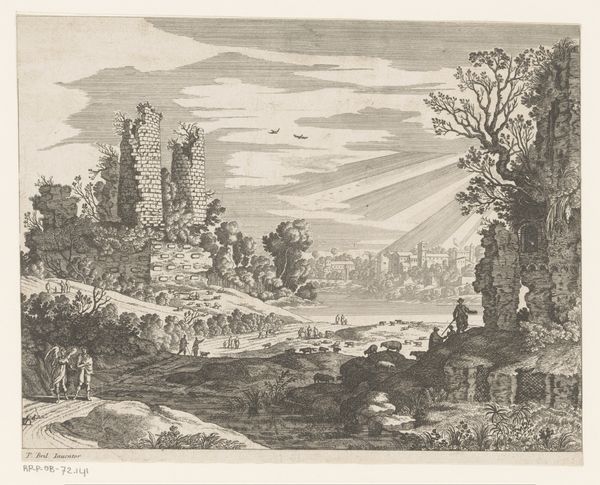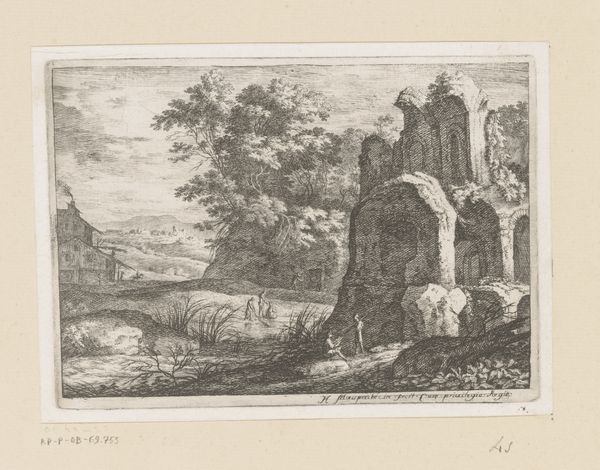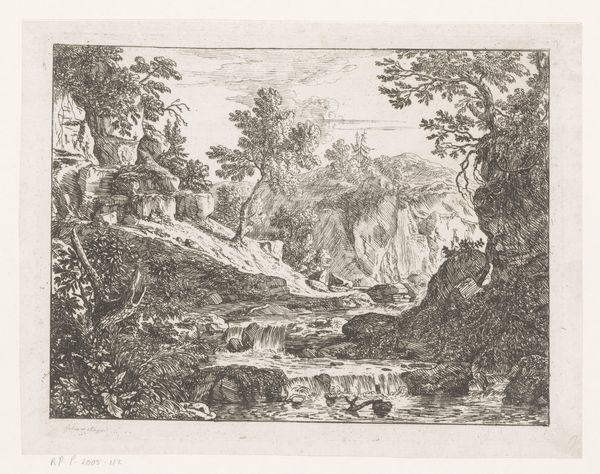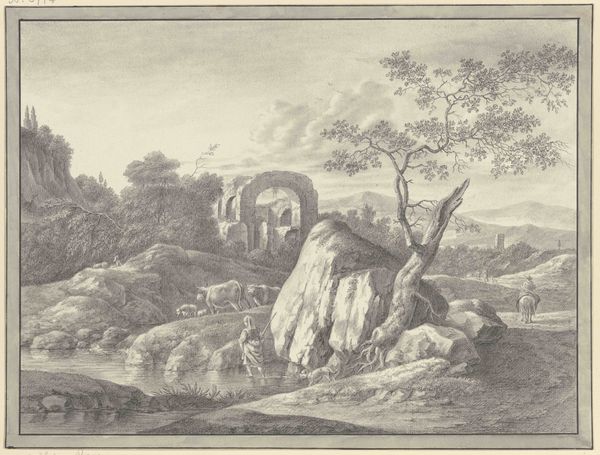
print, etching
#
baroque
# print
#
etching
#
landscape
#
figuration
Dimensions: height 247 mm, width 313 mm
Copyright: Rijks Museum: Open Domain
Curator: Let's turn our attention to this captivating landscape print. It's called "Herders bij een ruïne," or "Shepherds at a Ruin," and was created by Nicolas Perelle sometime between 1673 and 1695. Perelle, known for his landscapes, used the etching technique to create this scene. Editor: The word that jumps to mind is "melancholy." There’s something inherently poignant about ruins, isn't there? This feels like a stage set, beautiful but deserted, or at least gently populated. A soft abandonment hangs in the air like that wisp of smoke. Curator: Precisely. Landscape prints like these were quite popular with collectors. The baroque style often incorporated classical elements, like the ruin itself. This etching provides a window into an idealised, pastoral past, and the appreciation of classical heritage during the 17th century. Editor: The ruin, shrouded by this embracing, almost engulfing tree, speaks of nature's reclamation. Even the herders and their flock appear as secondary to this slow, inexorable process of decay and regrowth. Do you see how small they are on that promontory? They don’t fight the change, they are part of it. Curator: Good eye. Perelle was playing with scale and perspective. The positioning of the ruin on higher ground against the wide-open river valley creates a sense of vastness and also emphasises human insignificance within the natural order. Editor: This feels more introspective than I initially registered, as if Perelle urges the viewer to see beyond the bucolic. Those crumbling stones speak to the inevitable transience of even the most imposing structures. It is a poignant reminder that everything turns to ruin, sooner or later, just like the building. Curator: The art market valued these picturesque views. The demand fueled printmaking, making art accessible and broadly consumable. And beyond art, these were documents reflecting then-contemporary fascinations. Editor: Well, now when I look I see a quiet memento mori, expertly disguised as a pleasant rustic scene. A beautiful, bittersweet paradox captured in ink. Curator: An interesting perspective to take. Shall we move to the next piece?
Comments
No comments
Be the first to comment and join the conversation on the ultimate creative platform.

